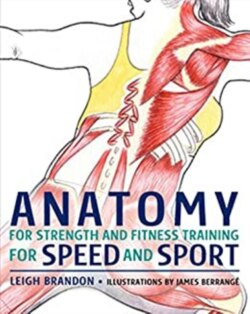Читать книгу Anatomy for Strength and Fitness Training for Speed and Sport - Leigh Brandon - Страница 8
На сайте Литреса книга снята с продажи.
ОглавлениеBODY PLANES AND REGIONS
When learning anatomy and analyzing movement, we refer to a standard reference position of the human body, known as the anatomical position. All movements and locations of anatomical structures are named as if the person were standing in this position (see illustration below).
Regional anatomy
This book is a technical labelling guide to the different superficial parts of the body. In anatomical language, common names such as ‘head’ are replaced with anatomical terms derived from Latin, such as cranial or cranium.
Within the different body regions there are subregions. For example, within the cranial region are the frontal, occipital, parietal and temporal subregions.
Anatomical planes
The body can be divided into three imaginary planes of reference, each perpendicular to the other.
The sagittal plane passes through the body from front to back, dividing it into a right half and a left half. The midline of the body is called the median. If the body is divided in the sagittal plane, directly through its median, this is known as the median sagittal plane. The coronal (frontal plane) passes through the body from top to bottom, dividing it into front and back sections.
The transverse (horizontal) plane passes through the middle of the body at right angles, dividing it into a top and a bottom section.
An anatomical cross-section of the internal structures of the body can be viewed in any one of these planes, which are also described as ‘planes of motion’, as the joint movements are defined in relation to one of the three planes. Understanding into which plane an anatomical cross-section is divided will help you to know what you are looking at and from which viewpoint.
